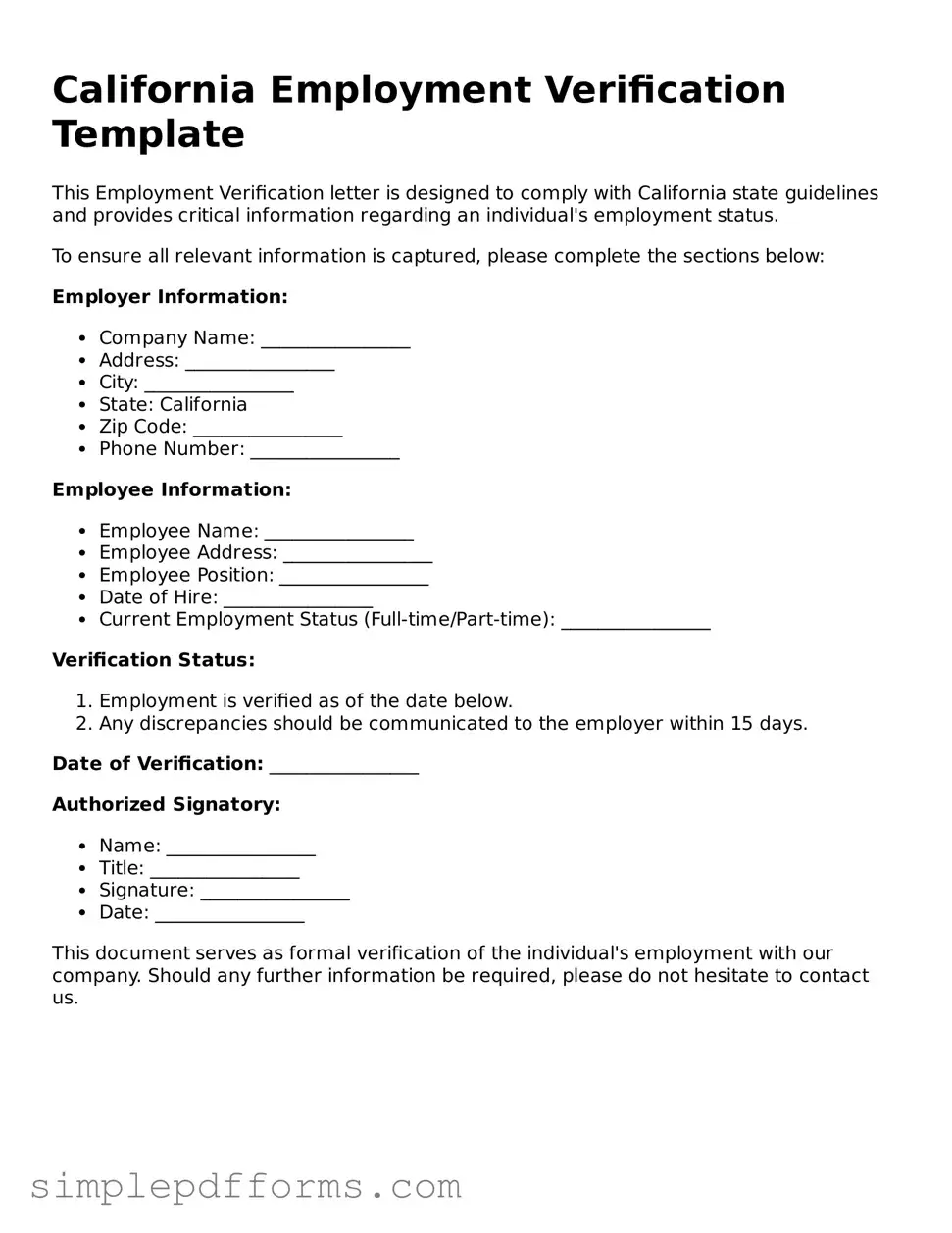California Employment Verification Template
This Employment Verification letter is designed to comply with California state guidelines and provides critical information regarding an individual's employment status.
To ensure all relevant information is captured, please complete the sections below:
Employer Information:
- Company Name: ________________
- Address: ________________
- City: ________________
- State: California
- Zip Code: ________________
- Phone Number: ________________
Employee Information:
- Employee Name: ________________
- Employee Address: ________________
- Employee Position: ________________
- Date of Hire: ________________
- Current Employment Status (Full-time/Part-time): ________________
Verification Status:
- Employment is verified as of the date below.
- Any discrepancies should be communicated to the employer within 15 days.
Date of Verification: ________________
Authorized Signatory:
- Name: ________________
- Title: ________________
- Signature: ________________
- Date: ________________
This document serves as formal verification of the individual's employment with our company. Should any further information be required, please do not hesitate to contact us.
